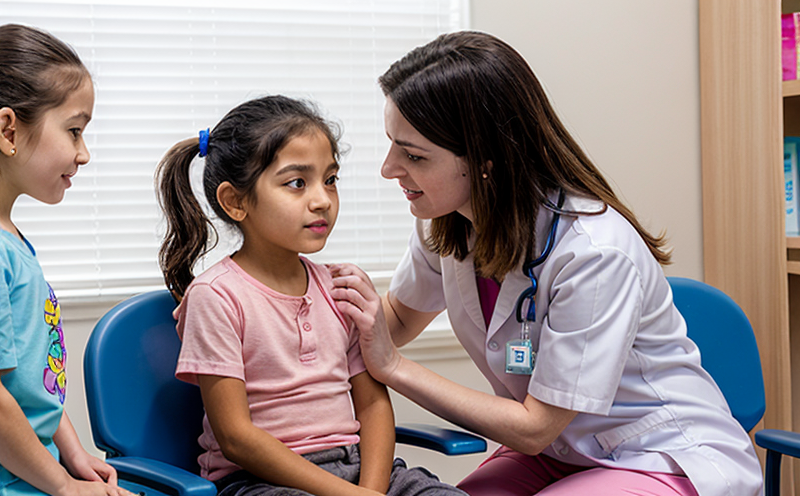Pediatric and Geriatric Toxicology Testing in Rodents
The pediatric and geriatric populations are among those most susceptible to toxicological risks. Understanding how various substances interact with these vulnerable groups is critical for ensuring safe product development, particularly in the healthcare sector.
Our service specializes in providing comprehensive toxicology testing tailored to both pediatric and geriatric patients using rodent models. This approach ensures that the results are not only accurate but also directly applicable to human populations. The use of rodents allows us to conduct extensive preclinical studies efficiently, providing valuable insights into potential adverse effects at various stages of development.
The primary focus is on identifying any toxicological risks associated with new pharmaceuticals, medical devices, cosmetics, and other consumer products intended for pediatric or geriatric use. By leveraging rodent models, we can simulate the physiological responses observed in young children and elderly individuals, offering a robust foundation for regulatory submissions.
Our testing protocol involves several key steps: initial specimen collection, sample preparation, exposure to test compounds under controlled conditions, observation of behavioral changes, and analysis of organ-specific biomarkers. This comprehensive approach ensures that we capture all relevant endpoints necessary for regulatory compliance.
The rodent models used in our studies include both young adult and aged animals, representing the pediatric and geriatric populations respectively. These models allow us to assess long-term effects as well as short-term impacts, providing a holistic view of potential risks.
For pediatric testing, we pay particular attention to developmental toxicity, which encompasses several critical aspects such as teratogenicity (ability to cause birth defects), reproductive toxicity, and neurotoxicity. For geriatric testing, our focus shifts towards understanding age-related changes in organ function, cognitive decline, and susceptibility to various toxicants.
Our laboratory adheres strictly to international standards including ISO 10993-1:2018 for general requirements for the safety evaluation of medical devices and OECD guidelines. These frameworks provide a robust framework for our testing procedures, ensuring that all tests are conducted with precision and reliability.
In summary, our pediatric and geriatric toxicology testing in rodents is designed to bridge the gap between preclinical research and clinical trials by offering accurate, reliable data that supports informed decision-making throughout product development processes. Our rigorous adherence to international standards ensures that these findings will be accepted globally, facilitating smoother regulatory approvals.
Applied Standards
In conducting our pediatric and geriatric toxicology testing in rodents, we strictly adhere to a range of internationally recognized standards and guidelines:
OECD Guideline for the Testing of Chemicals: OECD 407 (Subchronic Toxicity Study)
ASTM E1982-15 Standard Practice for Conducting a Rodent Carcinogenesis Bioassay
ISO 10993-1:2018 Medical Devices - Application of Good Manufacturing Practices (GMP)
ICH S2A Study Protocol for Subchronic and Chronic Toxicity Studies in Rodents
European Pharmacopoeia 5.0 Section on Biocompatibility Testing
The rigorous application of these standards ensures that our testing methods are consistent, reproducible, and align with global expectations for safety evaluation.
Quality and Reliability Assurance
We employ advanced analytical techniques including high-performance liquid chromatography (HPLC), gas chromatography-mass spectrometry (GC-MS), and inductively coupled plasma mass spectrometry (ICP-MS) to ensure precise quantification of test substances.
Our team consists of highly qualified professionals with extensive experience in toxicology, pharmacology, and analytical chemistry who are dedicated to maintaining the highest standards of quality.
We maintain strict laboratory protocols to minimize variability and ensure consistent results. This includes regular calibration of equipment, validation of methods, and implementation of standard operating procedures (SOPs).
Our data management systems are designed to track every aspect of the testing process from initial sample receipt through final report generation, ensuring complete traceability.
We conduct regular internal audits and external reviews by independent experts to verify our compliance with all relevant standards and guidelines.
These measures collectively contribute to the reliability and validity of our test results, providing confidence in their use for regulatory submissions.
International Acceptance and Recognition
The results from our pediatric and geriatric toxicology testing are widely accepted by major regulatory authorities such as the U.S. Food and Drug Administration (FDA), European Medicines Agency (EMA), Health Canada, and others.
Our compliance with international standards ensures that these tests can be easily incorporated into global regulatory submissions without additional modifications or retesting.
The use of rodent models has been validated through numerous studies and is recognized as a critical component in the preclinical evaluation of new pharmaceuticals and medical devices.
By adhering to these internationally accepted practices, we ensure that our clients receive testing results that are not only accurate but also readily applicable across different jurisdictions.





